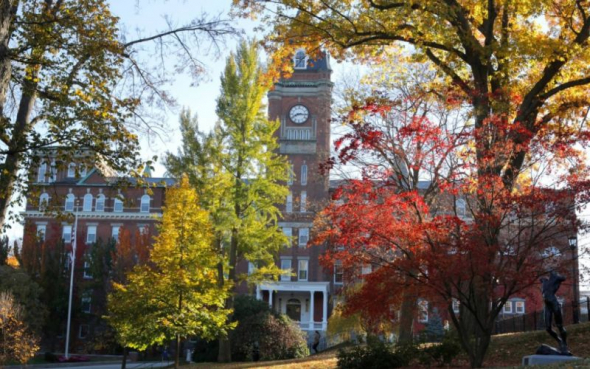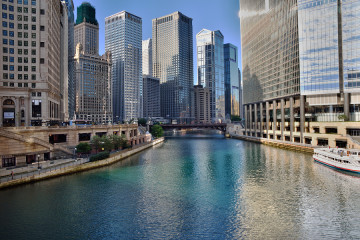Yes, Colleges Have Too Many Liberal Professors: Cass R. Sunstein

published Sep 17, 2018, 11:20:16 AM, by Cass Sunstein
(Bloomberg Opinion) —
Suppose that you start college with a keen interest in physics, and you quickly discover that almost all members of the physics department are Democrats.
Would you think that something is wrong? Would your answer be different if your favorite subject is music, chemistry, computer science, anthropology or sociology?
In recent years, concern has grown over what many people see as a left-of-center political bias at colleges and universities. A few months ago, Mitchell Langbert, an associate professor of business at Brooklyn College, published a study of the political affiliations of faculty members at 51 of the 66 liberal-arts colleges ranked highest by U.S. News in 2017. The findings are eye-popping (even if they do not come as a great surprise to many people in academia).
Democrats dominate most fields. In religion, Langbert’s survey found that the ratio of Democrats to Republicans is 70 to 1. In music, it is 33 to 1. In biology, it is 21 to 1. In philosophy, history and psychology, it is 17 to 1. In political science, it is 8 to 1.
The gap is narrower in science and engineering. In physics, economics and mathematics, the ratio is about 6 to 1. In chemistry, it is 5 to 1, and in engineering, it is just 1.6 to 1. Still, Lambert found no field in which Republicans are more numerous than Democrats.
True, these figures do not include the many professors who do not have a political affiliation, either because they are not registered at all or because they have not declared themselves as Democrats or Republicans. And, true, the ratios vary dramatically across colleges.
The faculties of Wellesley, Williams and Swarthmore are overwhelmingly Democratic, with ratios at or above 120 to 1. At Harvey Mudd and Lafayette, the ratios are 6 to 1. At the U.S. Naval Academy at Annapolis, it is 2.3 to 1; it is just 1.3 to 1 at West Point.
But despite the variability, none of the 51 colleges had more Republicans than Democrats. According to the survey, over a third of them had no Republicans at all.
For two reasons, these numbers, and others like them, are genuinely disturbing.
The first involves potential discrimination on the part of educational institutions. Some departments might be disinclined to hire potential faculty members based on their political convictions.
Such discrimination might take the form of unconscious devaluation of people whose views do not fit with the dominant perspective. For example, young historians who cast Franklin Roosevelt’s New Deal in a terrible light might not get a lot of job offers. And talented people might not pursue academic careers at all, because they expect that their potential professors will not appreciate their work.
The second reason is that students are less likely to get a good education, and faculty members are likely to learn less from one another, if there is a prevailing political orthodoxy. Students and faculty might end up in a kind of information cocoon. If a political-science department consists of 24 Democrats and 2 Republicans, we have reason to doubt that students will exposed to an adequate range of views.
It is true that in some fields, political affiliations do not matter. In chemistry, math, physics and engineering, students should not care about the party affiliations of their professors. Sure, it’s conceivable that Democratic chemistry professors want to hire fellow Democrats. But that would be surprising. In all likelihood, they are looking for good chemistry professors.
In fields of this kind, there is no reason to worry that political homogeneity will disserve students or undermine the exchange of ideas. If students are learning about special relativity or the physics of nuclei, partisan affiliations ought not to be relevant.
The real problems arise in subjects like history, political science, philosophy and psychology, where the professor’s political perspective might well make a difference. (The same is true of law.)
If academic hiring is skewed along ideological lines, the march toward uniformity might be self-reinforcing. Prospective professors will have an incentive to adopt the prevailing orthodoxy (or to speak and write as if they do).
It is far too simple, of course, to say that professors of history, political science, philosophy and the like should “look like America” in political terms. What matters is that they are experts in their fields, able to convey what they know. In faculty hiring, affirmative action for those with conservative political positions is not likely to serve anyone well.
Nonetheless, the current numbers make two points unmistakably clear.
First, those who teach in departments lacking ideological diversity have an obligation to offer competing views and to present them fairly and with respect. A political philosopher who leans left should be willing and able to ask students to think about the force of the argument for free markets, even if they produce a lot of inequality.
Second, those who run departments lacking ideological diversity have an obligation to find people who will represent competing views — visiting speakers, visiting professors and new hires. Faculties need not be expected to mirror their societies, but students and teachers ought not live in information cocoons.
John Stuart Mill put it well: “It is hardly possible to overrate the value … of placing human beings in contact with persons dissimilar to themselves, and with modes of thought and action unlike those with which they are familiar. Such communication has always been, and is peculiarly in the present age, one of the primary sources of progress.”
Cass R. Sunstein is a Bloomberg Opinion columnist. He is the author of “The Cost-Benefit Revolution” and co-author of “Nudge: Improving Decisions About Health, Wealth and Happiness.”
To contact the author of this story: Cass Sunstein at csunstein1@bloomberg.net
For more columns from Bloomberg View, visit Bloomberg view
COPYRIGHT
© 2018 Bloomberg L.P







No Comment